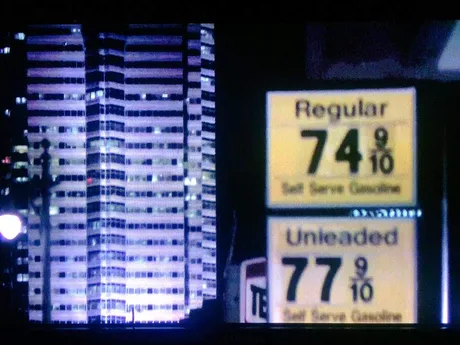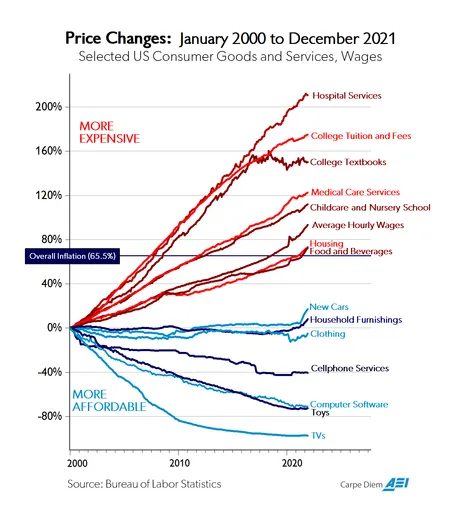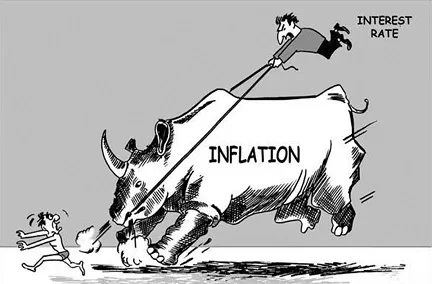
This is a theory I have talked about at length, but haven't put into practice yet (because I have no token to test it on).
However, we saw it play out pretty clearly on the CUB launch last year, and a handful of other DEFI tokens as well: when yield drops, price drops. This makes sense because if yield drops there is less incentive to hold the token, and thus more people are selling it on the market and extracting value from the liquidity pools.
Let me be very clear: if I'm right about this, it means that I'm right, and basically everyone else is wrong (especially Bitcoin maximalists). No one is talking about this issue within the context that I am framing it. Does that mean you should discount what I have to say? Probably not. After all, I'm the only one who has properly described what Impermanent Losses are. Every single other website on the planet is wrong. If you see the word 'Arbitrage' and 'Impermanent Loss' in the same article, they don't know what they are talking about. That's how early in the game we are; nobody knows what the hell they are doing.
Price goes up when inflation goes up?
What?
No one believes that, but it's true, and I'll tell you why.
DELAYED REACTION
Let's say I have a DEFI token like CUB with 10M tokens circulating in supply. I want to pump the token price temporarily. There are quite a few things I could do to accomplish this. The most obvious ways are marketing and fundamental development, but those have nothing to do with internal tokenomics. There are also supply burns (IDOs) that can increase demand and reduce supply. Again, these strategies are beyond the scope of this post.
Most people think if we reduce inflation, this will reduce supply, and thus the token price will be pumped. This is unequivocally false unless we can prove that the original inflation allocation was a bad investment in the first place.

Inflation is a function of risk.
Obviously if we increase inflation, that's THEORETICALLY going to increase supply which will THEORETICALLY dilute token value. However, we see that in practice this is not the case for a variety of reasons. The primary reason is that inflation is an investment. Thus if we make good investments and generate bigger returns than the cost of the investment, everyone on the network wins. This is not a zero sum game. If we allocate inflation to the correct places, value is created for everyone.
But even more important is the delayed reaction.
If I double inflation and thus double yield of my DEFI token, how much have I diluted the value of the network? The answer is zero, because inflation/yield is also a function of time. Thus, if I double inflation, yields (that are calculated with yearly APR/APY) will double instantly, but the number of extra tokens we created is zero until blocks actually start minting more tokens using the higher emission rate.
Thus we create a situation that gets delayed for an entire year. Users will look at the yields like, "Wow, that's a really good yield I should put my money here." However, the token dilution created from that yield won't be fully realized until that entire year has passed.
In essence jacking up inflation/yield can be thought of as an asset that makes farming said token appear much more appealing, while the hit to dilution is a debt liability that must be paid over the course of the next year.
So we should just keep increasing inflation?
Hm, maybe. Again, inflation is a function of risk/reward. Many of these DEFI 1.0 tokens decided to allocate all inflation to liquidity pools. Is that overkill? Probably. There are a lot of cool things we can do with inflation, and incentivizing AMM pools is just one of those cool things.
At the same time we must also realize that a token dropping in value over time is not a big deal if yields are higher than the loss. This is something that most people struggle with on a fundamental level. If the token drops in value 50%, but you farmed an x4 return, you're still up x2 after factoring token dilution. It's a common theme in DEFI (and in the legacy economy), that people ALWAYS complain about purchasing power going down without factoring income going up.

Take a look at the price of gas over 30 years.
Gas was more expensive in 2008 than it is now, but everyone is running around acting like they can say "printer go brrr" and they fully understand this complex ecosystem.
Now factor in that minimum wage has essentially doubled since that time. People were working for $8/h, now they can easily make $16/h. Thus not only was gas a little bit more expensive in 2008 then it is now, but wages were theoretically cut in half in this example. Thus gas was over x2 more expensive in 2008 than it is now, but everyone talks about hyperinflation like they know what they are talking about. They don't. People ignore wage increases and remember the cheap prices to their own detriment.
The minimum wage went to $1.00 an hour effective February 1967
Tell me more about how cheap things where in 60's when some people were making a wage of $1 an hour.
It's flat-out nonsensical logic.


This chart comes from a post that @taskmaster4450 wrote today.
Notice anything?
The cost for staying alive and education is going up, while the cost of technology is going down. And this chart doesn't even include the fact that people are getting paid way more now than they were 20 years ago.
As a side note, what is the economy telling us? I look at these numbers and I see that the economy is telling us Earth is overpopulated, and thus the cost of maintaining a bloated population is going up. But I'm going to stop there before I go into full-on conspiracy theory mode, as that would be grossly off-topic.

The point I'm ultimately trying to make here is that crypto has all these tools that the legacy economy doesn't have, but we have NO IDEA how to actually use these tools properly. Imagine going back in time 100 years and handing someone a data phone. Yeah, their mind would be blown, and they would also have NO IDEA how to use it, but they would still be amazed by it. That's happening with cryptocurrency right now to us. Satoshi Nakamoto is an alien, prove me wrong.
Price target is super important.
The first cryptocurrency to maintain a stable price like a real fiat currency will be the one that takes over quite quickly. Just like the federal reserve tries to tame the economy, so must cryptocurrencies employ elasticity. When demand for the token goes down the supply must contract, and when demand goes up the supply must increase.
Wait, what?
Did you catch that? I just said if demand goes down then supply must decrease. And how do we decrease supply? By INCREASING inflation. Yeah, you heard me: increasing inflation decreases the supply. Yes, I am right. Deal with it. Throw everything you think you know out the damn window. It is wrong. They are all wrong.
THAT DOESNT MAKE ANY GOD DAMN SENSE!
Yes, it does actually. When yield is high, what happens? People hold. Why do they hold? Because people are greedy and they want to farm as many tokens as possible. Again, there is a delayed reaction. If we increase inflation because we need to increase supply, that supply won't hit the market until a year goes buy, that strategy isn't going to work. In fact, it's going to do the opposite (pump the price when we need to reduce it). Thus when we want to increase supply we lower inflation (incentivizing selling), and when we want to decrease supply we increase inflation (which incentivizes buying)
Why do we need to reduce price?
Elasticity and price targets. If the price is too high we need to bring it back down to maintain stability. This is why we must have reasonable price/value targets in addition to reasonable growth targets. The better our guess is, the better we can create stability. Again, we need to guess right a full year in advance because our decisions have extremely delayed reactions.
Thus if we need to increase the price, we simply need to increase inflation. This makes people greedy in the short term while the dilution doesn't kick in till the long term. Conversely, if we need to reduce the price we simply decrease inflation so that yield goes down and people sell. In effect, decreasing inflation increases the liquid supply, especially in the short term, because people will dump. Increasing inflation squeezes the supply and pushes the price up, especially when the market knows that it will come back down later.
The devastating case of supply-shock
Supply-shock is the worst thing that can happen to a token, but don't tell a maximalist that because they are delusional cultists who think economies can be run on deflationary economics. Let be be very clear: no economy has ever worked using deflationary economics. Ever. There's no such thing as running an economy on deflationary game theory. That is a recipe for ultimate disaster in all known cases.
When Bitcoin has a supply shock, what happens? The price goes up, and everyone cheers, and then the price goes up, and everyone cheers, and then the price goes up... and then the noobs buy the top and get wrecked in a multi-year bear market and tell all their friend and family to never ever buy Bitcoin. This is not a reasonable business model that should be celebrated. Bitcoin's deflation punishes new users from entering the ecosystem right when the most new users want to enter. Make it make sense, because that's a fucking stupid way to run things.
So in terms of my own Magitek token...
If we were to experience supply shock... meaning the price kept going up and up even though we kept reducing inflation... that would basically be the worst thing that could possibly happen. Why is that? Because if the price is low we can always increase inflation to get the degens in there doing their thing. The cap on inflation is infinity.
However, the cap on LP yield is 0%. In fact, yield is the crux of AMM. So the cap on lowering yield/inflation is slightly above 0%. It is not possible to stop a supply shock from occurring once we are locked into that situation, while a price decline is often easily avoided. This is also portrayed somewhat in my long vs short post. The most anyone can make from shorting the market is how much they borrowed, while the most anyone can make from a long is infinity.
So what do we do when supply shock hits?
We either ride it out on low yields or we pump/dump the market on purpose. I'd actually love to attempt the pump/dump, because it would transfer all the money from the new users to die hard community. Simply jack up the inflation to the moon and create infinite FOMO and then rugpull after a huge pump. Easy enough. There's are pros and cons for each option.
Pros/Cons for pump/dump
Siphoning value from new users is a bad look and will hurt long-term network growth. However, a supply shock can also be seen as a form of attack. Imagine some VC was trying to buy out the network. We'd obviously what to punish them and siphon all that value into our own pockets. In that case we jack yields up to the moon which has a double whammy effect of increasing short term price while also increasing long term dilution. Both of these things would cripple a venture capitalist, as they'd have to buy tokens at a high price on top of those tokens being diluted as time rolls by.
What about the opposite situation?
The one where the price of the token falls below our target. This is a problem that's much more easy to deal with, especially if our price target is accurate. This is honestly why so many tokens get wrecked. They don't have a price target. They shoot for the moon. Their price target is infinity and they have no elasticity. Thus when the token goes 10x, it does that matter. They want 100x. If the price goes 100x it doesn't matter. They want 1000x. The greed is infinite.
But if Magitek spikes from $1 to $3, we still have a price target of $1, and we might increase that price target to $1.25 maybe and start lowering yields to bring it back down to earth. If that doesn't work and we hit a supply shock at $4... then we know that perhaps we should engage in price discovery and set the target price to $3 or $4 and then pump and dump the hell out of the token to flush out all the bullshit. Again, all of these tools are now available, but literally no one is out there doing these things... and I'm an idiot and I'm not doing them either... lol.
Are there any other tools in the chest?
Yes, non-liquidity pools are critical. The CUB kingdom is good example. If we increase yield to that contract it will raise the price and if we lower it it will lower the price. In extremely dire situations we can also cannibalize the LP pool. Meaning we lower yield to the LPs and increase the yield to the single-token contract, pulling liquidity out of the LPs and forcing it into the "den" if the price crashes too badly.
Conversely when the price spikes out of control we gimp the "den" yield and push that liquidity into the LPs. If we are trying to maintain a higher price, we keep the LP yield the same or even increase it, or if we want a dump we rugpull the LP by taking yield away from it.
I still don't get why we would lower the price on purpose.
Again, stability. If a DEFI token always hovers between $0.90 and $1.10 users will never stop buying that token. Why, because its stable, and stability is key for creating economies and currency itself. It creates an unparalleled psychological security that other volatile tokens can't compete with. Imagine being able to buy into a crypto project and being objectively guaranteed to make money. That's simply not a thing yet, but it can be. We have the tools.
Using these tools: that dreaded price volatility is redirected into the yield itself and the underlying token price becomes stable. Instead of letting token price fluctuate, we reallocate all that instability directly into the yield pools. Instead of having to worry about the token price going up or down, now users just have to look at the yield being offered.

Imagine it:
This is what I hope to achieve with Magitek. Imagine one token is always worth between $1.10 and 90 cents. If you see that the token is worth $1.10 and yields are trash, are you going to buy? You already know that you shouldn't (and perhaps even the frontend will recommend as much). However, if you see the price at 90 cents and yields are jacked up to the moon, you're going to ape into my token instantly because hot damn what a good deal. And then when the price is back up to $1.10 and yield is trash, maybe you sell and help bring the price back down (unless you anticipate supply shock or just like to hodl).
This stability will create an entirely new psychological mindset. It makes everyone feel like a pro investor because they can't lose. The network is rightfully telling them when to buy and when to sell, and they are making money off those trades. Even people who hold then entire time or buy in at $1.10 aren't going to get wrecked. At worst they lose 20% of their token value, but again they'll be locking in yields so that loss probably won't even matter, especially in the long term.
Conclusion
Can you see it yet? I feel like I'm taking crazy pills. I feel like I'm the only one who can see where this is going. The key to unit-of-account and currency itself is stability. DEFI has shown us the answer and the path we need to take, but no one is taking it. Variable yields and monetary elasticity are the solution to the volatility problem. By outsourcing spot price volatility to variable yield on liquidity pools, we win the unit-of-account game... and the store of value game... and the medium of exchange game. Never before has it even been possible to have all three. Economists minds will be blown asunder.
It is in this regard that Bitcoin will never be able to compete. Bitcoin is a niche security token. It is the ultimate "oh shit" button. Bitcoin takes no risk, and thus it will ultimately receive no reward compared to some of these other projects in the making. That being said security will be the number one asset when shit hits the fan and we find ourselves in a digital war with these legacy systems. Again, none of these tokens compete. This is a cooperative. Everyone is supposed to be helping everyone. Zero sum game theory is flying out the window.
If you only remember one thing from this post, remember this: All economies are slow moving and subject to chain-reaction domino effects. If we want a heathy network we have to be proactive and make good guesses as to how quickly we will grow and how to best allocate the resources that will come under our command. It is no easy feat to be sure, but other crypto networks aren't doing this, at all, so even doing it badly will still be better than everyone else this early in the game.
Increasing inflation chokes the supply short term and increases the supply long term. Decreasing inflation increases the supply short term and chokes the supply long term. Stable cryptocurrencies are going to need to figure this out before they can call themselves a unit-of-account. Elasticity and velocity are key components that most networks ignore in favor of toxic deflationary mechanics, token burns, and premines. Don't fall for that scam. It's a trap.
Posted Using LeoFinance Beta
Return from Delayed Reaction: Why reducing inflation lowers price and vice versa. to edicted's Web3 Blog
